The long-term risks for teens that abuse substances are increased likelihoods of adult addiction, developing certain cancers or heart disease and engaging in dangerous sexual behaviors that could result in contracting a sexually transmitted disease and/or an unplanned pregnancy. But there are also serious short-term risks, with the most serious being the increased likelihood of getting into a vehicular accident.
In addition, while many teens are advised not to drive a car while under the influence they may not use enough caution when considering the sobriety of another driver.
A recent study highlights the risk teens take when they drive a car or enter the car of a driver that is under the influence. Conducted by researchers at the Mailman School of Public Health at Columbia University, the study examined the risk of drug use and the risk of drug use combined with alcohol use and how such use impacted the risk of a fatal crash.
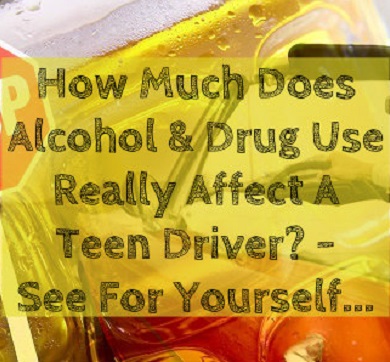
Drastic Increases In Fatal Crashes When Drugs Are Involved
The researchers found that there was a drastically increased risk of experiencing a fatal crash when drugs were involved in an accident, and this was particularly true when the drugs were used in addition to alcohol.
The study’s data was pulled from two national databases commissioned by the National Highway Traffic Safety Administration: the 2007 National Roadside Survey of Alcohol and Drug Use by Drivers and the Fatality Analysis Reporting System (FARS). FARS compiles investigation information for all vehicular crashes that resulted in a fatality within 30 days of the crash occurring on a public road.
This study is unique in its use of the two databases together to compile information about circumstances surrounding events, such as the individuals and vehicles involved.
The study, led by Guohua Li, MD, DrPH, professor of Epidemiology and director of the Center for Injury Epidemiology and Prevention, found that 31.9 percent of all drivers implicated in fatal crashes tested positive for at least one drug. Of those interviewed at roadside, 13.7 percent tested positive for at least one drug. Overall, drivers that test positive were three times more likely to be involved in a fatal car crash, with the highest risk associated with depressants followed by stimulants.
The study also showed that blood alcohol levels were increased in 57 percent of those involved in fatal crashes, while 8.8 percent of the roadside interviews had an elevated blood alcohol level. Approximately 20 percent of the fatal crash drivers tested positive for alcohol consumption and one or more additional drugs. Among the roadside interviews, 2.2 percent tested positive for alcohol and another drug.
Alcohol Increases Fatal Car Crashes By 13 Times!
The risk of involvement in a fatal car crash increased 13 times for those that tested positive for alcohol only, two times for those that were drug-positive and 23 times for drivers that were under the influence of both drugs and alcohol.
The authors of the study note that drugs may be detectable in a driver’s blood test that may not be causing impairment. In addition, the authors say that the study does not account for various levels of tolerance that may be exhibited among individual drivers, making it difficult to measure drug impairment.
Decreased Risks When Parents Talk With Their Teens
The findings highlight the importance of talking with teens about the risks of driving a vehicle while under the influence or entering a vehicle in which the driver has been using.
Parents that explain the risks and dangers can help their child make an informed decision.
When you look at the numbers, it can be discouraging to see how many teenagers continue to experiment with drugs and alcohol as this often leads to addiction. What most teens have difficulty comprehending is how this behavior could affect them for the rest of their lives.
Types Of Drugs Teens Experiment With
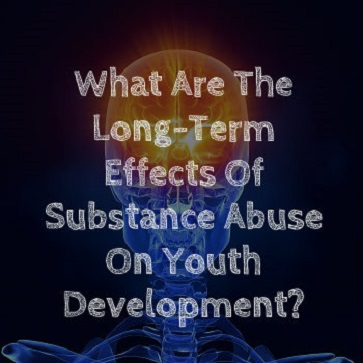 Just over one million American teenagers are addicted to illegal drugs, with another 915,000 addicted to alcohol. Even if they’re not addicted, an alarming number of teens are regularly using, with over half of high school seniors reporting having experimented with drugs and close to 30 percent having tried something other than marijuana, like heroin, cocaine, prescription drugs, inhalants, sedatives and mind-altering hallucinogens. The highest rate (19.9 percent) of illegal drug use occurs between 18 and 20 years, with the next highest rate (16.4 percent) happening between 16 and 17.
Just over one million American teenagers are addicted to illegal drugs, with another 915,000 addicted to alcohol. Even if they’re not addicted, an alarming number of teens are regularly using, with over half of high school seniors reporting having experimented with drugs and close to 30 percent having tried something other than marijuana, like heroin, cocaine, prescription drugs, inhalants, sedatives and mind-altering hallucinogens. The highest rate (19.9 percent) of illegal drug use occurs between 18 and 20 years, with the next highest rate (16.4 percent) happening between 16 and 17.
Alcohol use affects more than 10 million teens, with 5.1 million regularly binge drinking, which is defined as downing more than four or five drinks during a single sitting. Not far behind is inhalant abuse, with 25 percent of all teens 10- to 17-years-old saying they have friends who inhale dangerous fumes from things like paint, computer cleaner or glue.
Teen Drug Use Can Have Negative Effects For Years To Come
Unfortunately, the bad choices made in youth can haunt for years to come. The brain undergoes vital development during adolescence. Not since infancy has their brain been changing and forming with such rapidity.
Drug use can disturb the proper development of the prefrontal cortex in the brain. This area of the brain is responsible for important functions like organization, risk assessment, impulse control, consequence prediction and planning. But the limbic system, corpus callosum, hippocampus and cerebellum are all still forming and vulnerable to the changes wrought by drugs. Functions like emotional control, goal-setting and memory/recall are all still developing, and drug use could cause permanent problems in these areas.
Studies have repeatedly shown that heavy marijuana use damages key brain functions for years, with some researchers believing the changes are permanent. Processes like critical thinking, planning and complex attention are all shown to be diminished by heavy marijuana use. Girls seem to experience longer-lasting ill-effects, but both females and males show problems with myelin sheath formation, which affects brain signaling.
MDMA, which also goes by Molly and ecstasy, is associated with sensations of euphoria and social bonding, which is why it’s popular with young people attending large group gatherings such as concerts and dance clubs. Ironically, lowered serotonin levels as long as seven years have been observed in laboratory animals after they’ve been given MDMA, with serotonin closely associated with emotional happiness.
Alcohol causes harm to adolescent brains as well, especially binge drinking. Heavy drinking in teens has been shown to lower their ability to problem solve and understand spatial relationships, as well as memory and vocabulary impairment. And just like drugs, alcohol affects the limbic system, meaning emotional well-being is disrupted. In fact, there appears to be a connection between drinking and behavioral problems due to a lack of emotional control — researchers just aren’t sure which problem came first.
Using drugs and alcohol during adolescence can have serious and long-lasting results, with neurological development issues, impaired social development and addiction. And all of these problems can easily follow teens into adulthood.
Read More About The Effects Of Teen Substance Abuse On Families
Coroner Rules Cory Monteith’s Death Due to Heroin and Alcohol Use
According to the U.S. Department of Health & Human Services, heroin addiction is a chronic, relapsing brain disease. With intermittent abstinence, the body loses its resistance to the user’s drug of choice, which makes overdosing more of a probability. Some believe this might have been the case with Glee actor Cory Monteith.

Courtesy of: www.hdwallpapersinn.com
Canadian-born Monteith, 31, was found dead in a Vancouver hotel room in July alongside a hypodermic needle and spoon covered in drug residue and two empty bottles of champagne. He played the hunkish Finn Hudson on the show, a character with a heart of gold.
The coroner’s report found that Monteith succumbed to a mixture of alcohol and intravenous heroin use, with the death ruled accidental. He was alone at the time.
Young Celebrities Who Have Died From Drug Abuse
In recent years, a handful of actors have failed to live out their 30s because of addiction: River Phoenix collapsed outside a popular Hollywood nightclub in the early 1990s after overdosing on a combination of heroin and cocaine; Heath Ledger died a couple of years ago after succumbing to prescription drugs; Corey Haim, a 1980s child star who battled addiction since he was 15, died in 2010 after taking several forms of depressants and an anti-psychotic drug.
Monteith’s Early Drug Use
In Monteith’s case, he came out to the media with his drug problems, saying he began smoking marijuana at 13 and was abusing hard drugs by 16. He admitted to one publication that he felt lucky to be alive after some of the drug-fueled episodes he had gone through.
Every year more than 200,000 heroin addicts are imprisoned. So what can be done to help?
Naltrexone For Reversing Effects Of Heroin Overdose
Naltrexone is a drug that reverses the effects of a heroin overdose, but it’s been shown to be ineffective as an addiction treatment drug. Other drugs used as treatments are more addictive than the heroin addiction they’re supposed to be treating. At present there is no pharmaceutical cure-all for addiction.
Silver Lining – Cory Monteith’s Fan’s Learning Of Drug Abuse’s Dangers
Experts agree that if heroin addiction is perceived and treated as the chronic brain disease that it is, the stigma surrounding the issue will be lessened and more treatment avenues will be established. While Monteith’s case is tragic, it’s possible that his young fans may have learned about the dangers of drug abuse instead of following down his path.
Silk Road, the website that became an Amazon.com for online drug deals, reached its inglorious end. Visitors to Silk Road could buy and sell illegal drugs, illicit prescription drugs, weapons and ammunition or make contact with computer hackers. Ross William Ulbricht, who founded the site under the alias Dread Pirate Roberts, had been pursued by the FBI for two years.
“Silk Road” Website Shut Down – Ross William Ulbricht AKA Dread Pirate Roberts Captured
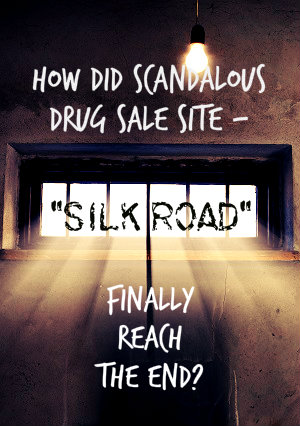 Ulbricht was arrested and the site shut down on October 1. Authorities seized $3.6 million in the virtual money known as bitcoin. Ulbricht, 29, faces a list of felonies including conspiracy to traffic in narcotics, computer hacking, money laundering and solicitation of murder.
Ulbricht was arrested and the site shut down on October 1. Authorities seized $3.6 million in the virtual money known as bitcoin. Ulbricht, 29, faces a list of felonies including conspiracy to traffic in narcotics, computer hacking, money laundering and solicitation of murder.
Silk Road was launched in 2011 and has served as an Internet clearinghouse for drug deals totaling around $1.2 billion. Ulbricht’s personal take home as middleman on those sales was reported to be $80 million.
Dread Pirate Roberts referred to a masked character in the movie and novel The Princess Bride who, it turned out, was not one man but a series of men, allowing the name to be passed on to the previous holder of the title to retire with his riches. Ulbrict is alleged to have sought out contract killers to assassinate people he disagreed with, posted an email address which contained his name in an online forum and alluded to the illegal operation on his personal LinkedIn account. All of which lead to his capture instead of retiring with his millions.
Ulbricht had everything going for him. He graduated from the University of Texas at Dallas, where he was a physics major on a full scholarship. Later he became a graduate research assistant at Penn State University, earning his Master’s Degree in Materials Science and Engineering and writing a thesis with the title “Growth of EuO Thin Films By Molecular Beam Epitaxy.” But after leaving Penn State he shifted his goals from physics to libertarian principles, viewing the Silk Road website’s forum for conducting illegal transactions as a model of economic theory that, according to his LinkedIn account, would “abolish the use of coercion and aggression against mankind.”
Selling Illegal Drugs To Teenagers Secretly Over Internet
The website and its users employed blocking software which protected identities on both ends from discovery by legal authorities. And he used a virtual currency, bitcoins, to pay for it all. The expertise behind the Silk Road and bitcoins may be admirable, but the application of that knowledge has been anything but.
Ulbricht has said that he is interested in peaceful Eastern religion and starting a family. But what Silk Road allowed was a haven for criminal activity, including the sale of illegal drugs to teenagers. The drugs were sold in secret over the Internet and then delivered by the U.S. postal service. Ulbricht tweeted about the irony, a sort of public thumbing of his nose. But authorities got the last laugh.
17 Oct 2013
You May Think It’s Molly, But It May Not Be
Hospitals face a difficult problem whenever someone comes in to be treated for a Molly overdose. The patient may believe they’ve taken a form of ecstasy, but there is no way to know what the person actually swallowed. There is no “Truth in Labeling Law” to govern illegal drugs, and many think they’ve been using Molly when they’ve really been taking some other highly dangerous substance.
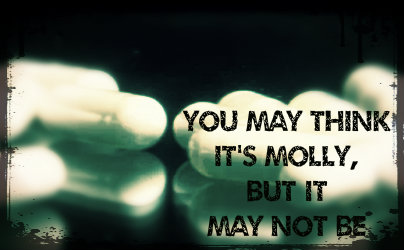
Courtesy of: www.ktsm.com
Molly is the street name for the synthetic drug MDMA. It’s called Molly because of the powder or capsule form that it comes in, as opposed to tabs, and the presumption that the “molecular,” or Molly for short, form is more pure. Synthetic drugs are also sometimes referred to as designer drugs. They are often compounds designed to mimic the effects of traditional drugs like marijuana, LSD or ecstasy, among others. Synthetic marijuana, for example, is sold as K2 or Spice.
Mislabeled And Dangerous Synthetic Designer Drugs
The problem is that you don’t know the person who designed your Molly. The Drug Enforcement Agency regularly tests the drugs it obtains through seizures. Those tests often reveal that pills are mislabeled.
Experts often find methylone in the pills, which is a key component in bath salts, another synthetic drug famous for being unpredictable and causing serious health side effects. In 2012 a man was arrested for importing methylone from China and then selling it to someone as Molly. That person died after using the drug.
Dangerous Side-Effects Of Molly
Molly is a popular drug for young people attending raves, dance clubs and concerts. The drug enhances positive emotions and feelings of bonding with others. However, Molly also increases a person’s heart rate and raises their body temperature, sometimes to extremes. One young man died with a body temperature of 109 after taking Molly. The risks of dehydration are so well known that special booths are often set up at events where Molly is expected to be used.
Symptoms commonly seen in hospitals include agitation, seizures, soaring fever and increased heartbeat. Since there is no way to know for certain what the young person actually ingested, the best hospital staff can do is to manage symptoms while they wait for the effects of the drug to wear off. Hardly reassuring.
Dying After Taking Molly
Over Labor Day weekend 2013 several young people died after taking Molly at various concert venues, with one multi-day concert in New York was shut down due to deaths. Nevertheless, rappers and rock stars continue to sing about the beauties of Molly. And young people continue to swallow whatever they are being told by their idols.
To Read More About Molly’s Dangerous Side-effects On Teens – Click Here
Teenage substance abuse touches every kind of family regardless of race, social level or education. When a teen uses it never affects just themselves – it impacts everyone around them, especially other family members.
 Family relationships become strained as a teen deepens their use of alcohol or drugs. This happens for many reasons. In the midst of substance abuse, teens can become secretive, irritable, depressed, lazy, hard to motivate and sometimes even angry or aggressive. Obviously, close relationships are negatively affected by this kind of personality and behavior change.
Family relationships become strained as a teen deepens their use of alcohol or drugs. This happens for many reasons. In the midst of substance abuse, teens can become secretive, irritable, depressed, lazy, hard to motivate and sometimes even angry or aggressive. Obviously, close relationships are negatively affected by this kind of personality and behavior change.
Family members may become angry themselves or develop avoidant behaviors in order to deal with an unruly teen under the influence. To avoid conflicts or feelings of guilt and rejection, the teen may increasingly isolate himself in his room away from the family, further weakening the familial bond.
Ignoring And Denying Teen Drug Use
Many families begin by ignoring or denying the existence of the problem, telling themselves it’s just a phase, or excusing the behavior because of difficult circumstances in the teen’s life.
Attempts are made to keep the problem secret and hidden from others. Unfortunately while the family is trying to protect the teen from direct consequences or prying eyes and wagging tongues, they are actually enabling the behavior and preventing the teen from getting much-needed help.
Enabling Teen Addicts
It isn’t unusual for family members to want to show love and mercy. When there’s a sob story parents and siblings may give the teen money, which typically goes to fund the habit. In other scenarios the addict doesn’t ask for money, they simply take it. Again, family members sometimes decide not to confront when money is suddenly missing from their purse or wallet.
Teen Substance Abuse On Younger Siblings
One huge impact of teen drug or alcohol abuse is the example it sets for younger siblings. Little brothers or sisters may decide to imitate the behavior. They start hanging out with the teen’s friends who are likely to be users themselves. Conversely, when siblings don’t respect the abuser it can create a rift in what was formerly a close relationship.
Parents get drawn into the fallout of teen substance abuse, blaming themselves or one another for the problem. Besides not resolving the issue it can wind up producing depression in one or both of the parents, compounding the family’s issues. Without a strong support network, parents and siblings can feel isolated, hurt and impotent.
Family Dangers With A Teen On Drugs And How To Intervene
The fact that teens can become violent while they are drunk or high creates an entirely separate risk issue from all of the relational breakdowns. They may become unpleasant to be around, even violent, and they may lie and steal, making everyone in the home feel terrorized.
What families need to do in order to halt the downward cycle of destruction is intervene. For some families this will mean signing the teen up for an outpatient program, for others it may mean placing the teen in a residential treatment center. Since getting at the root issues of substance abuse often takes time, some families opt for therapeutic boarding schools. Whatever the decision, ignoring the problem won’t make it go away and enabling the problem only makes it worse.
Teens that begin using alcohol and other substances during adolescence are engaging in what experts call early initiation, which is a concern because individuals that begin using substances recreationally in high school may go on to develop a dependence by the time they reach adulthood.
There are deterrents in place to prevent teens from using alcohol and cigarettes; including age limits and heavy consequences if a business is caught selling to minors or an individual is caught purchasing for them.
A new study conducted by the Centre for Addiction and Mental Health (CAMH) finds that the majority of teens in Ontario, Canada, obtain these products from friends or family.
The researchers surveyed teens in grades 7 to 12. Among the students that smoked cigarettes, 58 percent report obtaining their last cigarette from a friend or family member. 19 percent of teen smokers said that they bought the cigarettes from a corner store, bar, gas station or grocery store.
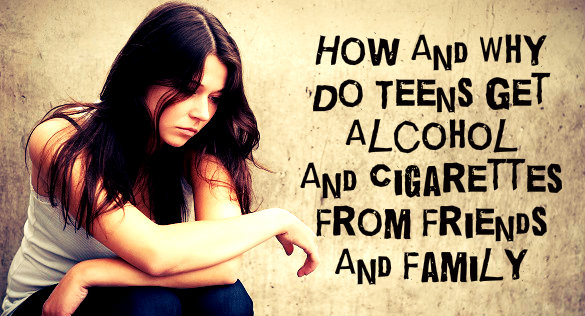
Gender, Age And Neighborhood Differences In Obtaining Cigarettes, Alcohol
Males were more likely to report that they had obtained cigarettes from a store compared with females. Seventy-three percent of the females involved in the survey said that their last cigarette came from a friend or family member.
When students were asked about consuming alcohol, 39 percent of those that drank said that their last drink was given to them, while 28 percent asked someone else to purchase the alcohol for them. Four percent of students said that they purchased the alcohol themselves from a liquor store.
The students from an urban area were more likely than those in rural settings to indicate that someone had provided them with alcohol (40 vs. 35 percent). Among those in rural areas, 33 percent of the students said that they gave someone else money to purchase alcohol for them, while 27 percent of students in urban settings asked someone to buy alcohol for them.
The report also found that there were trends according to the student’s age. Older teens were more likely than their younger counterparts to admit that they obtained alcohol by paying someone to purchase it for them. This occurred at a rate of 32 percent for older teens versus two percent for younger teens. Younger teens were more likely to indicate that someone gave them alcohol at a rate of 53 percent versus 37 percent for older teens.
Parents And Corner Stores Involvement And Responsibility
Principal investigator for the study, Dr. Robert Mann, is also the Senior Scientist at CAMH. Mann explained that teens are often obtaining alcohol and cigarettes from the very people that should be protecting them from exposure to such substances.
The findings also indicated that teens were able to easily access cigarettes from corner stores that don’t sell alcohol. The findings suggest that the availability of alcohol at corner stores could result in increasing rates of teens purchasing alcohol.
The information for the study was derived from the Ontario Student Drug Use and Health Survey by CAMH. The survey was administered to 9,288 students in the 7 through 12 grades at 40 public and Catholic schools in Ontario. The survey has been given to students every two years since 1977.
Parents concerned about their children obtaining alcohol and cigarettes during adolescence can openly discuss these matters with their teens. Studies have shown that by introducing the topic multiple times into conversation teens are much more able to make informed decisions.
Another way to prevent teens from using substances is to talk with other family members about the teens’ substance use. In some cases, the teen is obtaining cigarettes or alcohol from an older sibling.
Already this fall one college campus has been rocked by prescription drug abuse. A cheerleader from the University of Minnesota was arrested in September when she was found in possession of drugs without a prescription. This is but a microcosm of a serious national problem. Young people all across America are buying and sharing powerful prescription medications.
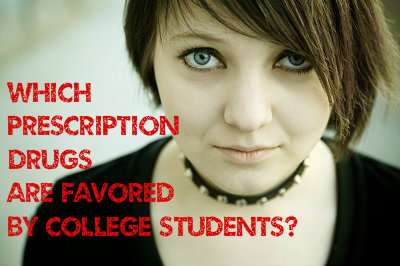 The 18-year-old at the University of Minnesota was seen wandering up and down the halls of her dormitory, seemingly in a drunken state. When officials entered her dorm room they found prescription painkillers but no prescription. They also found an electronic scale and an undisclosed amount of marijuana. She is facing three separate felony charges and potentially five years in prison.
The 18-year-old at the University of Minnesota was seen wandering up and down the halls of her dormitory, seemingly in a drunken state. When officials entered her dorm room they found prescription painkillers but no prescription. They also found an electronic scale and an undisclosed amount of marijuana. She is facing three separate felony charges and potentially five years in prison.
Majority Of College Students Sharing Prescriptions?
But her story is far from unique. One survey reported that 70 percent of college co-eds said they shared prescription medications with one another. A health official told a local news station that that for every one student with a legitimate prescription another five students possess stimulants with no prescription. And the problem is not restricted to college campuses. Another study found that 20 percent of graduating high school students say they have used prescription drugs for non-medical purposes.
One reason prescription drug abuse has escalated has to do with the enormous supply of pills that are floating around where young people can get them. An astounding 210 million prescriptions were written by doctors for painkillers in 2010, and that number has only gotten larger. With that many pills sitting on shelves in homes it’s hard to choke off the supply.
Opiates And Stimulants – Drugs Favored By College Students
The most popularly abused prescription drugs are opiate painkillers derived from the same opium poppy as heroin. When meds become harder to get or start costing too much, kids move on to heroin as it produces similar effects at a fraction of the cost.
Stimulants like Adderall and Ritalin are also popular among young people. These drugs are most often used to treat the symptoms of attention deficit hyperactivity disorder, but healthy kids take them to increase study skills, stay awake for parties and lose weight.
Dangers Of Prescription Drug Abuse
According to the Centers for Disease Control, at least 100 people die each day as a result of prescription drug overdose. The danger is real, though young people seem oblivious. The arrest of a pretty young college cheerleader is just the tip of the iceberg.


